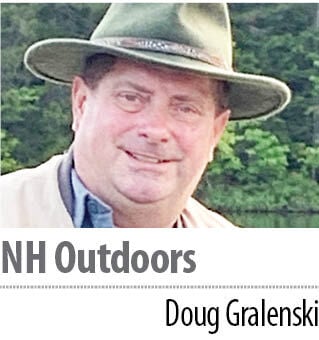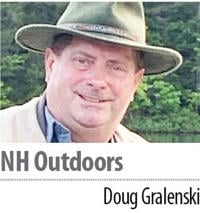ALTHOUGH the peak of the rut is in the rearview, late-season deer hunting in New Hampshire can be exceptional, especially if Mother Nature can provide a few inches of snow.
Snowflakes are in the air. Cold air is entrenched for the foreseeable future. As I wrote this, there was a good chance of “tracking snow” by the weekend.
I just returned from a short trip from Pittsburg. The season ends a week early in Zone A, but if hunting on snow is on your post-Thanksgiving bucket list, it’ll be there waiting for you. Up until recently, conditions have been mild, so plenty of deer are still in the big woods, yet to migrate into their yards.
Fresh snow provides many more advantages than just providing a hunter the ability to follow a deer. When I was younger, or even today, if there are enough hours of daylight left, I still will take a track. But in my youth, I would try to outrun it. Today, I’m smart enough to pace myself. I’m more interested in what the deer I’m following is doing.
First off, is he a he? It helps to know, particularly if it’s buck-only season. That’s not to say following a doe has no value. If fresh signs are scarce, following a doe or group of does is a good way to intersect a cruising buck. But I know the bucks in my valley will zombie cruise miles in search of a doe in estrus once the majority of the does have been bred. It can be a long walk back to your truck if you’re not careful.
No, I’m generally using the snow to establish patterns. What is a buck’s core area? Where did he freshen a scrape? Which runs is he using? Is he feeding or just cruising? Where is he bedding? If I’m on a fresh track that starts to meander, I’m especially looking for a bed. Ideally with him in it.
Really, I’m thinking of where he’ll be as much as where he is. But if the snow is fresh and soft, so that I can move silently and I think there’s a reasonable chance he might be stationary in front of me, still hunting is the way to go. And there’s nothing to say another buck that you were unaware of is in the mix as well. Half of being a successful hunter is getting into that frame of mind, “I am the apex predator.”
Normally, it is nearly impossible to walk up upon a deer without it being aware you’re coming. If you get close to a deer that’s still bedded, that’s because it thinks if it just stays still, you will walk on by without seeing it. It knows you’re coming; it has just chosen stealth as its defense. It works most of the time, especially when the ground is bare.
But with snow on the ground, not only can you see tracks, but you can see much deeper into the woods. Snow provides a backdrop that helps your eyes pick out the lateral line of a deer’s back that otherwise would be invisible in the branches. Like a white snowshoe hare on bare ground, a brown deer on white ground has the same effect.
But that’s not to say they stick out. Motion will generally reveal their location, not their color. An ear or an antler is much easier to see on a head turning with a white backdrop. The lateral line of the back grabs your brain’s attention as something “unnatural.” That black eyeball jumps out a little more clearly from behind a snow covered branch.
Snow doesn’t necessarily give you an unfair advantage, but it certainly does a lot to level the playing field. There’s a level of satisfaction in seeing where the deer have been and observing their habits. It helps to understand where they will be in the future. I like to believe that when I successfully shoot a deer, it is because I knew what his habits were and I was able to get one step in front of him. In the short term, snow helps me catch up to them from behind, but in the long term, snow helps me stay out in front of them. And there’s no better way to enjoy the North Country’s big woods after Thanksgiving.
I hope you have the opportunity to do the same.



